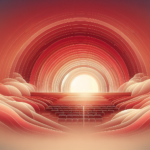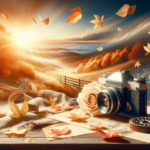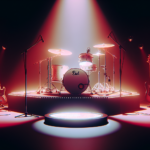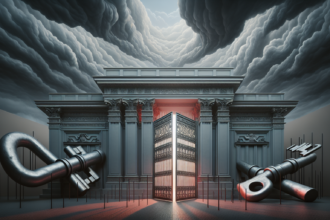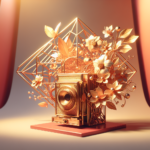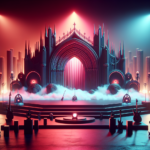Patna’s Sewak Ram painted a watercolor of prayers at a Muharram festival in 1820. The English East India Company, founded in 1600 as a trading enterprise, gradually transformed into a colonial power. By the late 18th century, as it tightened its grip on India, Company officials began commissioning Indian artists to create striking visual records of the land they were now ruling.
“A Treasury of Life: Indian Company Paintings, c. 1790 to 1835,” an ongoing show in the Indian capital, features over 200 works that once lay on the margins of mainstream art history. It is India’s largest exhibition of Company paintings, highlighting their rich diversity and the skill of Indian artists.
Painted by largely unnamed artists, these paintings cover a wide range of subjects, but mainly fall into three categories: natural history, architecture, and Indian manners and customs. Giles Tillotson of DAG, who curated the show, says, “The focus on these three subject areas reflects European engagements with their Indian environment in an attempt to come to terms with all that was unfamiliar to Western eyes. Europeans living in India were delighted to encounter flora and fauna that were new to them, and ancient buildings in exotic styles.”
India’s architectural heritage captivated European visitors.
Before photography, paintings were the best way to document travels, and iconic Mughal monuments became prime subjects. Popular subjects included the Taj Mahal, Agra Fort, Jama Masjid, Buland Darwaza, Sheikh Salim Chishti’s tomb at Fatehpur Sikri, and Delhi’s Qutub Minar and Humayun’s Tomb. Sita Ram, a once-obscure and long-anonymous Indian artist, painted the tomb of Sheikh Salim Chishti at Fatehpur Sikri between 1815-25.
From June 1814 to early October 1815, Sita Ram traveled extensively with Francis Rawdon, also known as the Marquess of Hastings, who had been appointed as the governor-general in India in 1813 and held the position for a decade. The largest group in this collection is a set of botanical watercolors, likely from Murshidabad or Maidapur in present-day West Bengal. While Murshidabad was the Nawab of Bengal’s capital, the East India Company operated there.
Muharram prayers in watercolor painting
Nicolas Roth of Harvard University writes, “The plants represented in the paintings are likely quite illustrative of what could be found growing in both the well-appointed gardens as well as the more marginal spaces of common greens, waysides, and fields in the Murshidabad area during the late eighteenth century.”
Another painting from the collection depicts a temple procession showing a Shiva statue on an ornate platform carried by men, flanked by Brahmins and trumpeters. Labeled Ouricaty Tirounal, it depicts a ritual from Thirunallar temple in Karaikal in southern India, capturing a rare moment from a 200-year-old tradition.
By the late 18th century, Company paintings had become true collaborations between European patrons and Indian artists. Art historian Mildred Archer called them a “fascinating record of Indian social life,” blending the fine detail of Mughal miniatures with European realism and perspective. Regional styles added richness.
Tanjore artists, for example, depicted people of various castes, shown with tools of their trade. These albums captured a range of professions. Kanupriya Sharma of DAG says, “They catered to British curiosity while satisfying European audience’s fascination with the ‘exoticism’ of Indian life.”
Most studies of Company painting focus on British patronage, but in southern India, the French were commissioning Indian artists as early as 1727.
A striking example is a set of 48 paintings from Pondicherry, showing the kind of work French collectors sought by 1800. Among the standout images are two vivid scenes by an artist known as B, depicting boatmen navigating the rough Coromandel coast in stitched-plank rowboats. Company paintings often featured natural history studies, portraying birds, animals, and plants, especially from private menageries.
These subjects are typically shown life-size against plain white backgrounds, with minimal surroundings. Ashish Anand, CEO of DAG, says the latest show proposes Company paintings as the “starting point of Indian modernism.” Anand says this “was the moment when Indian artists who had trained in courtly ateliers first moved outside the court (and the temple) to work for new patrons.”
“The agendas of those patrons were not tied up with courtly or religious concerns; they were founded on scientific enquiry and observation,” he says. “Never mind that the patrons were foreigners.
What should strike us now is how Indian artists responded to their demands, creating entirely new templates of Indian art.”



